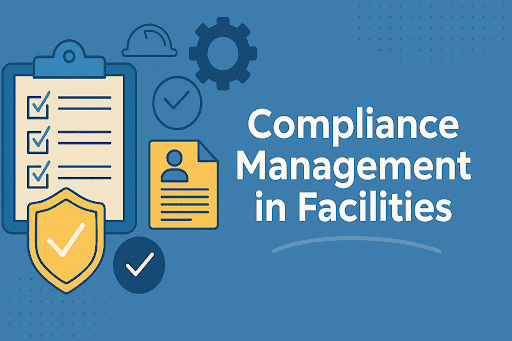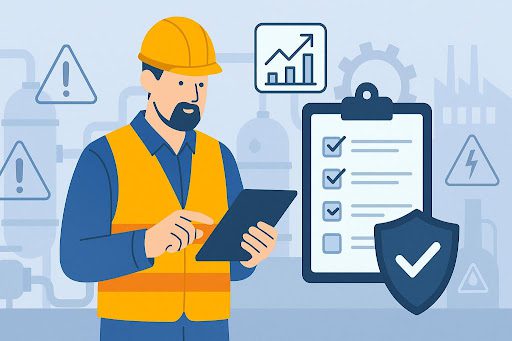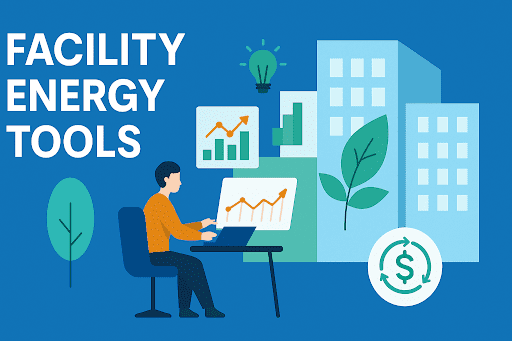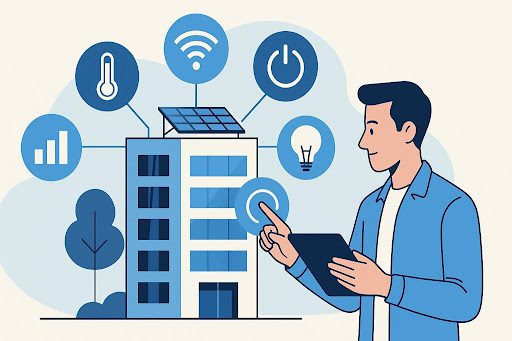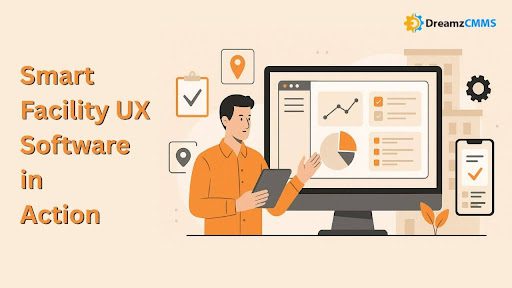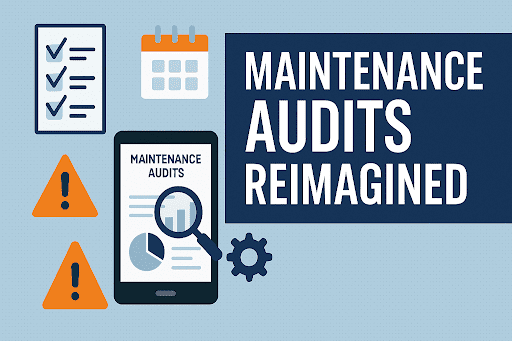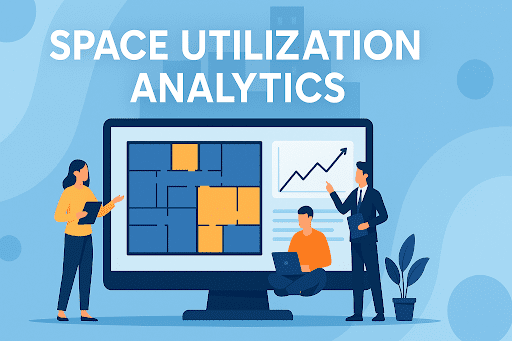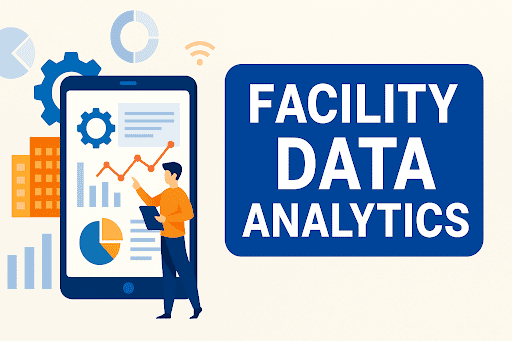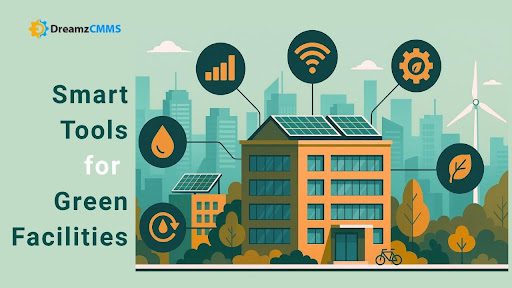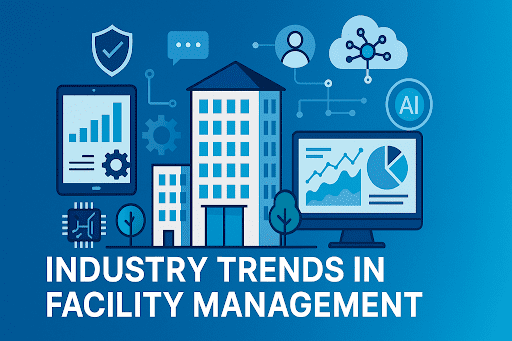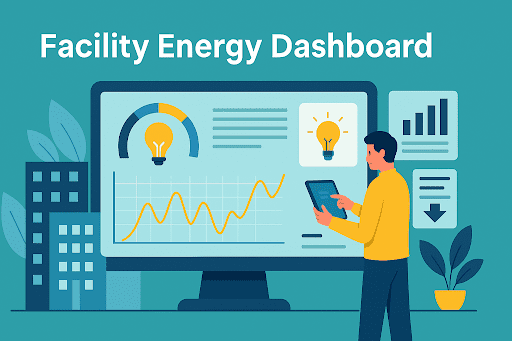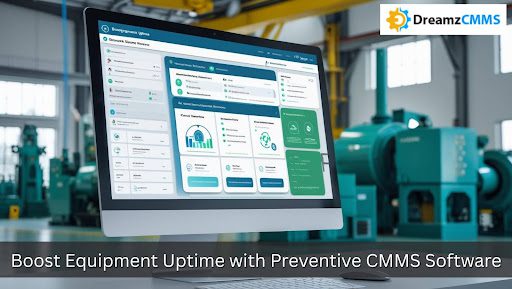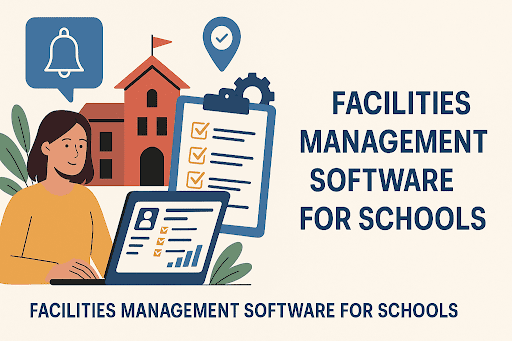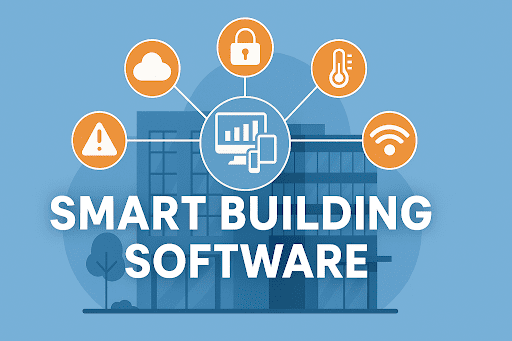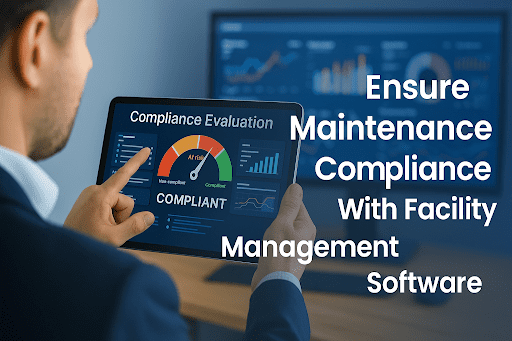 BACK TO Blog
BACK TO Blog
Asset Rental Management
Facility
The modern focus on sustainability has elevated energy efficiency from being an economical choice to an essential business strategy. Facility managers experience ongoing stress because they need to decrease energy usage while minimizing both energy expenses and environmental effects. A Computerized Maintenance Management System (CMMS) functions as a powerful instrument
- May 16, 2025
- DreamzCMMS Team
- 10 minutes read
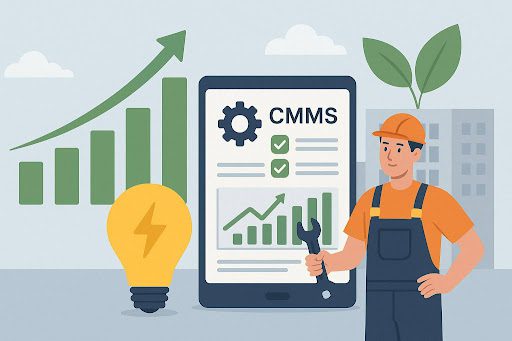
- May 16, 2025
- DreamzCMMS Team
- 10 minutes read
The modern focus on sustainability has elevated energy efficiency from being an economical choice to an essential business strategy. Facility managers experience ongoing stress because they need to decrease energy usage while minimizing both energy expenses and environmental effects. A Computerized Maintenance Management System (CMMS) functions as a powerful instrument to help organizations meet their energy efficiency objectives. A well-executed implementation of a CMMS system enables energy management to become a proactive process that facilities can both monitor and achieve.
Optimize Your Facility for Peak PerformanceWant to streamline operations while maximizing sustainability? Explore our powerful Facility Management Software—a comprehensive solution that connects maintenance, energy tracking, asset performance, and compliance all in |
Why Energy Efficiency Matters in Facility Operations
The global energy usage of facilities remains substantial particularly in industrial sites and commercial buildings together with hospitals and educational campuses. Poor equipment maintenance of HVAC systems and lighting together with production equipment results in unnecessary energy waste because they are major energy consumers.
The implementation of facility operations energy efficiency optimization leads to:
Optimizing energy efficiency in facility operations results in:
- Cost savings and reduced overhead
- Prolonged asset life and reliability
- Greater regulatory compliance and audit readiness
- Contributions to sustainable facility management
- Improved environmental, social, and governance (ESG) performance
- Enhanced tenant or occupant comfort and satisfaction
High energy efficiency has evolved from being an operational achievement to becoming a brand requirement because businesses must demonstrate their commitment to green initiatives and sustainability metrics in our current business environment.
Efficient energy use requires smart tools and CMMS emerges as the leading solution.
The Role of CMMS in Enhancing Energy Efficiency
CMMS functions as more than an automated work order software system. The platform unites asset management with automated maintenance while offering extensive monitoring of facility operational performance and energy consumption.
The following elements explain how CMMS supports energy-efficient building operations:
1. Preventive Maintenance Reduces Energy Waste
Excessive energy usage occurs frequently because of postponed or unattended maintenance activities. Systems utilizing clogged filters and worn bearings and outdated components need to consume additional power to maintain their output levels.
With CMMS:
- The implementation of scheduled energy-saving maintenance protocols by technicians
- Maintenance of filters and coils and belts and motors occurs at their best possible intervals
- The combination of reduced downtime with peak asset performance levels
The practice of preventive maintenance leads organizations to decrease both repair expenses and energy consumption levels throughout multiple years.
2. HVAC Energy Monitoring and Smart Alerts
The energy consumption of Heating, Ventilation, and Air Conditioning (HVAC) systems represents between 30-50% of total facility energy expenditure. Any inefficiencies within this system will lead to significant financial losses.
The combination of CMMS with IoT sensors enables HVAC systems to provide better decision-making capabilities and automated management.
- Real-time temperature and humidity data are captured
- Energy use per zone is monitored
- Smart alerts notify of anomalies or inefficiencies
This integration allows facilities to act instantly on insights, avoid prolonged inefficiency, and support climate control goals.
3. IoT for Energy Management and Smart Energy Controls
The integration of CMMS with IoT technology creates better decision-making capabilities through automated processes. The use of smart energy controls in lighting systems as well as HVACs and machinery operates through adjustments that follow:
- Occupancy levels
- Peak energy times
- Historical usage patterns
The integration of real-time weather data enables HVAC systems to adjust their operations automatically. CMMS records these adjustments and logs performance improvements, helping teams evaluate energy-saving outcomes.
4. Utility Usage Tracking with CMMS Dashboards
Facilities using real-time utility usage tracking move from costly reactive control to active efficiency.
The dashboard system in CMMS enables:
- Usage data (kWh, gallons, BTUs) can be segmented by floor, department, or equipment
- Peak demand periods can be analyzed and mitigated
- Historical comparisons help forecast and plan budget-efficient strategies
The advanced dashboards enable facilities to conduct detailed investigations which allows them to detect their most energy-intensive assets and create better usage strategies.
5. Automated Energy Reports and Compliance
The need for environmental and energy compliance reporting has increased significantly in recent years. The implementation of CMMS allows organizations to stay audit-ready for ISO 50001, ENERGY STAR and municipal requirements.The system provides features which include generation of custom automated energy reports.
- The system tracks both inspection records as well as maintenance actions performed.
- The system enables visualization of sustainability target achievements through progress tracking.
- This solution benefits organizations that operate multiple buildings across different campuses.
This is especially valuable for large organizations managing multiple buildings or campuses.
6. Predictive Maintenance Informed by Energy Metrics
Predictive maintenance differs from scheduled preventive maintenance through its use of real-time data to identify when assets require servicing.
- Power consumption data and sensor information integrate with CMMS to deliver these capabilities.
- The monitoring of equipment behavior occurs continuously for detecting any minor deviations in performance.
- The system prevents failures before they occur which lowers the need for emergency energy-intensive recovery efforts.
The facility operates continuously through this approach which maintains its energy efficiency level.
7. Lifecycle Planning and Smart Asset Replacements
Every asset has an end of life beyond which its operational costs exceed its value particularly regarding energy efficiency. CMMS helps determine:
- Energy use trends of aging assets
- Cost comparison between maintaining vs replacin
- The replacement options deliver carbon emission reductions together with energy efficiency improvements
- The gathered insights help organizations plan their capital expenditures while maintaining sustainability.
These insights support capital expenditure planning and long-term sustainability.
A holistic energy oversight system emerges through BMS-CMMS integration for facility management.
The implementation of Building Management Systems (BMS) with Computerized Maintenance Management Systems (CMMS represents a significant advancement for facility energy management. The BMS operates in real time to control essential systems including HVAC and lighting and elevators and security while CMMS uses its scheduling and asset performance tracking capabilities. The combination of these two platforms gives facility managers complete visibility into equipment health and energy consumption data.
The integration allows for data exchange between systems. The BMS system detects abnormal energy consumption patterns through its chiller unit monitoring and automatically generates maintenance work orders which the CMMS receives. The predictive maintenance approach helps organizations avoid equipment failures while simultaneously extending equipment lifespan and minimizing avoidable energy consumption. After maintenance completion the CMMS system updates the BMS which then resets performance baselines before identifying upcoming system anomalies.
The continuous exchange between maintenance activities and energy performance data enables teams to develop better choices. The system enables organizations to reduce system operation during peak utility hours which helps decrease costs without affecting operational activities.
The system enables users to link maintenance documentation with energy consumption patterns. The system recommends additional diagnostic tests or equipment replacement when lighting in specific areas shows continued high power consumption after maintenance work. The obtained information proves highly beneficial during the process of planning energy retrofits for older buildings.
An integrated system dashboard delivers unified performance metrics which include energy cost per square foot alongside carbon savings and asset maintenance expenses. Executive decision-making becomes more effective through this system which also ensures daily operations maintain alignment with sustainability targets.
Technicians also benefit. Technicians obtain mobile alerts, which help them complete high-priority tasks quickly while making system updates easily accessible. The outcome produces fewer manual tasks along with faster responses and enhanced total system performance.
Organizations achieve a smarter system-wide energy strategy by integrating CMMS with BMS.
Real-Life Impact: CMMS Energy Savings in Action
Case Study: A Multi-Site Retail Chain
A retail chain operating across 100 locations throughout the nation faced high energy bills combined with unreliable HVAC system performance. The company implemented CMMS with IoT integration as part of its solution.
- Energy monitoring was centralized across all stores
- The HVAC units underwent quarterly energy-specific inspections through scheduled maintenance
- The system produced automated reports which measured HVAC energy usage compared to predefined benchmarks.
The system marked malfunctioning units so maintenance teams could plan replacement work.
Results within 18 months:
- Overall HVAC energy use dropped 17%
- The utility bill reductions reached more than $400,000 in total savings.
- The frequency of HVAC equipment failures decreased by 60% during this period.
- The corporate ESG reports received precise accurate data from real-time sources to satisfy stakeholder requirements.
CMMS established standardized operations across all facilities which made the brand a prominent environmental leader in retail energy operations.
Overcoming Implementation Barriers
The process of implementing CMMS for energy tracking faces various challenges during its deployment. Common challenges include:
- The process of connecting existing equipment with contemporary energy sensors remains complex for organizations.
- Change management and staff resistance
- Data overload without clear insight
The IT department failed to coordinate their work with maintenance personnel and sustainability specialists.
Best Practices to Succeed:
- The CMMS implementation should begin with a pilot project which focuses on either one location or a single system such as HVAC.
- The organization should establish champions who serve as internal advocates for both technology adoption and energy initiatives.
- All parties must understand the objectives so CMMS implementation stays aligned with energy performance indicators and ESG reporting metrics.
- External CMMS vendor consultants help organizations achieve streamlined integration through their expertise.
- The CMMS system should incorporate a reward system which gives recognition to teams who succeed in decreasing their energy consumption.
Facilities that implement these practices achieve better staff engagement along with faster return on investment.
CMMS as a Core Tool in Sustainable Facility Management
Energy efficiency operates within sustainable facility management as an integral component instead of being an isolated objective. CMMS enables the connection between sustainability targets with operational standards to establish initiatives which produce measurable and repeatable and impactful results.
Benefits of CMMS for sustainability:
- The system decreases both energy consumption and carbon emission levels.
- The system enables organizations to achieve green certifications through compliance with LEED, BREEAM, ISO standards.
- The system enhances working conditions for employees.
- The company shows its environmental stewardship to shareholders and stakeholders through this demonstration.
- The educational sector can experience CMMS through our Facilities Management Software for Schools guide.
To see CMMS in action within the education sector, check out our guide on Facilities Management Software for Schools.
Final Thoughts
Organizations require energy efficiency to become a necessary business practice instead of a voluntary expense. Facility managers who want to achieve sustainable performance can use CMMS as their strategic energy transformation enabler beyond maintenance functions.
With the right CMMS, you can:
- Eliminate wasteful energy practices
- Extend equipment lifespan
- Improve technician response and accountability
- Track and meet ESG commitments
The beginning marks just the starting point. Organizations implementing CMMS will lead the way because their systems enable cost reduction and leadership alongside responsible and impactful practices as energy regulations become more stringent and sustainability reports become mandatory.
Also, don't miss how operational accuracy and inventory control influence energy outcomes. Explore Inventory Accuracy with RFID Asset Tracking Software for complementary benefits.
Ready to Take the Next Step?Your energy strategy requires modernization through smart maintenance systems and automated solutions, whether you manage one building or multiple locations. Partner with DreamzCMMS, a trusted leader in intelligent facility management solutions. Do you want to experience how this system operates? Your team can achieve cost reduction and sustainability targets and maintain higher uptime by using data-driven insights. Book a Free Demo to discover these benefits today. |
Ready for More?
Talk to one of our CMMS experts and see how DreamzCMMS can simplify your maintenance operations.
Book a free consultation